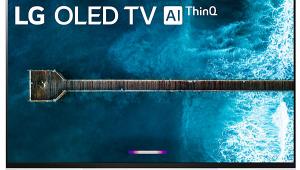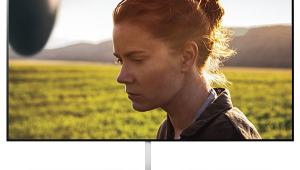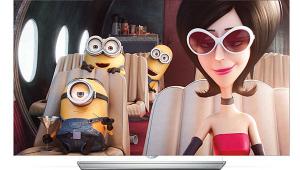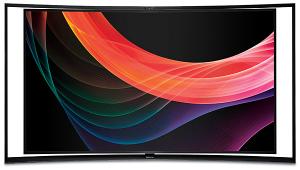Samsung KN55S9C 3D OLED HDTV Test Bench
Full-On/Full-off Contrast Ratio: 457,124:1
Measurements were made in the Movie preset and Warm2 color temperature mode. Post-calibration measurements were in the same mode, adjusted for dark room viewing. When displaying a 0 IRE test pattern, the KN55S9C’s screen has the same pure-black appearance that LED TVs have when their backlights completely switch off. Even so, the set’s black level measured 0.00007 foot-lamberts on a lab-grade Konica/Minolta CS2000A spectroradiometer, while brightness measured from a 100 IRE window pattern was our user-selected 32 ft-L. This yielded a contrast ratio of 457,142:1, the highest we’ve ever measured on any display. Peak brightness in Movie mode with the Cell Light setting boosted to maximum was 104.3 ft-L. That is bright—almost twice as bright as the peak light output delivered by Samsung’s standard-setting F8500 series plasma. It should also be added here that pushing the Cell Light setting that high didn’t subjectively alter the set’s black level, though our limited time prevented measurements at every picture-settings permutation.
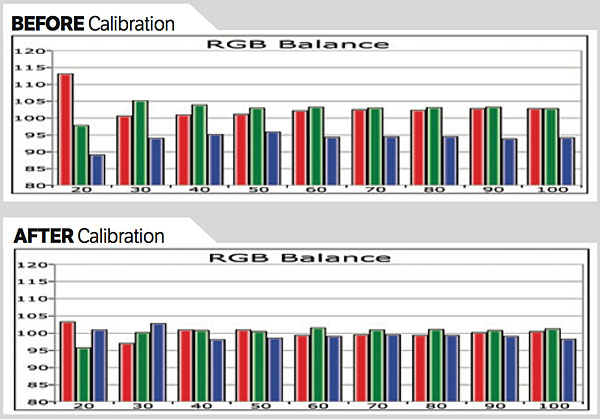
In its preset Movie mode, the Samsung displayed a broad blue dip in RGB balance that leaned subtly toward pink; its gray scale averaged out to 6,204 kelvins (K). Post-calibration, the gray scale average was 6,484 K—closer to the D65 (6,500K) target—and remained linear throughout the entire range except for a slight blue bump at 30 IRE. Described using Delta E values, the set’s pre-cal gray scale averaged out to 8.2; post-calibration, it averaged a much improved 2.5, with a high of 5.7 at 20 percent brightness.
(Delta E indicates how closely a display adheres to the Rec. 709 HD color standard; experts generally agree that levels below 3 are visibly indistinguishable from perfect color tracking.)
With the Auto Color Gamut option selected, the Delta E of the Samsung’s color points averaged 0.3—basically spot-on. Post-calibration, that nudged slightly up to 0.5, an essentially meaningless change. Gamma in Movie mode closely tracked the dim room target at 2.19. With the Gamma setting moved to –1, the Samsung measured closer to the dark room target, averaging out to 2.33.
Picture uniformity was very good with one exception: a faint purple/pink tint that could be seen on full-field gray test patterns, though its severity varied with seating position. While this proved mostly a non-factor on regular program material, there were a few instances were it cropped up, such as the snowy peaks in the Art of Flight Blu-ray, and the plain white backgrounds in certain scenes from the Coraline 3D disc. There was also a degree of bowing distortion due to the panel’s curved design that was mostly evident with letterboxed movies, but again its effect here varied with seating position. Off-axis uniformity was excellent, with contrast remaining uniform at well off-center seats.
We were unable to evaluate the TV’s deinterlacing and video processing performance due to time constraints.—AG



